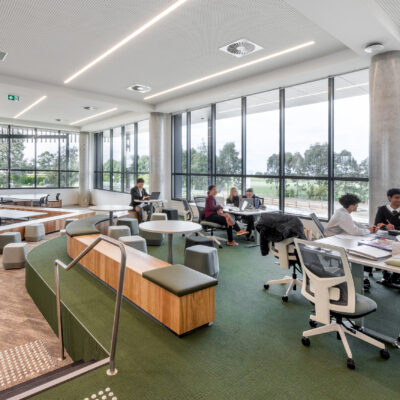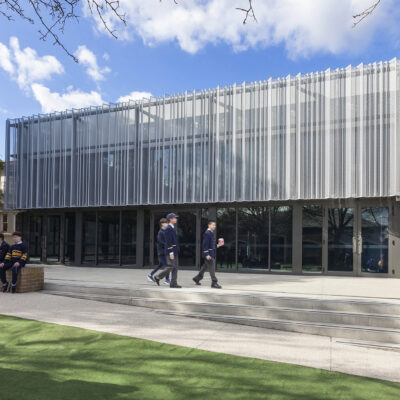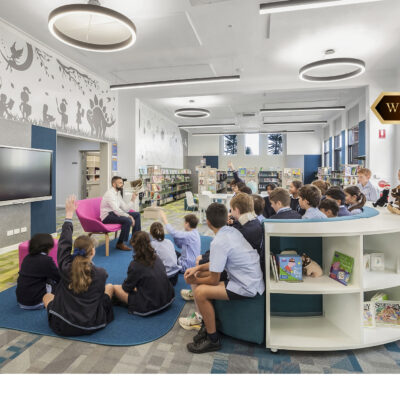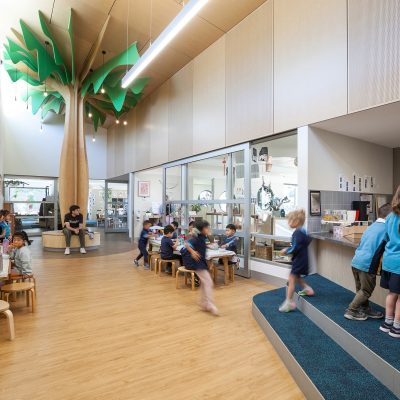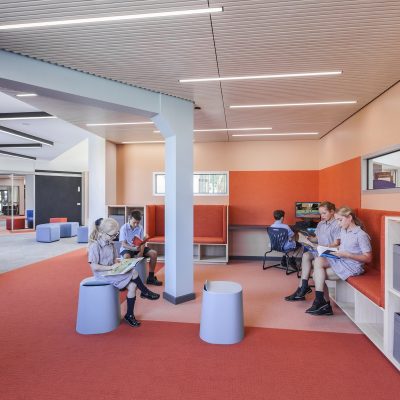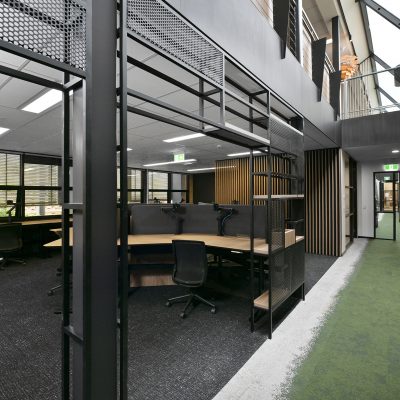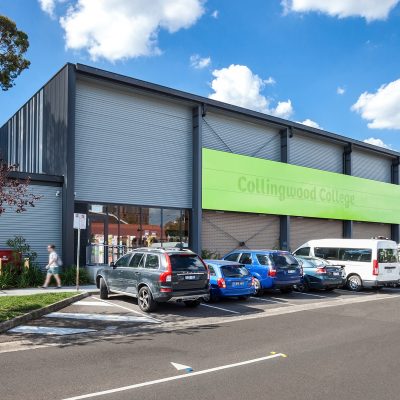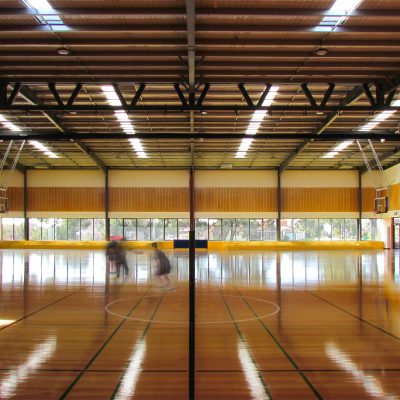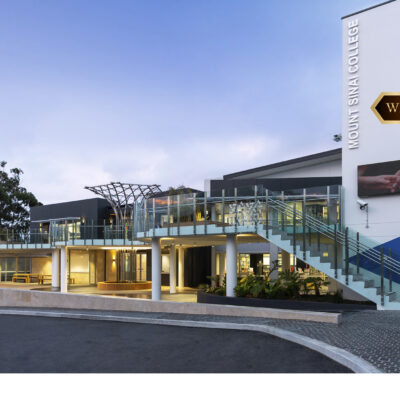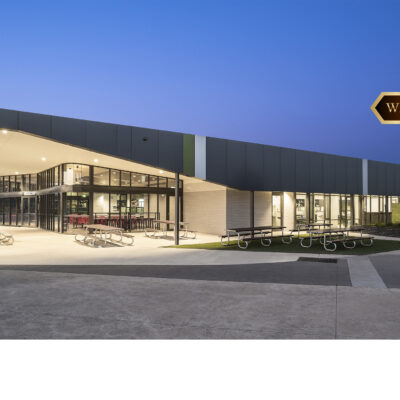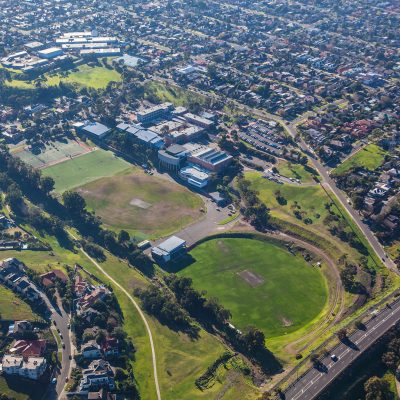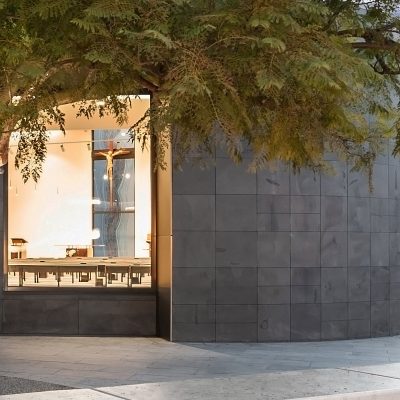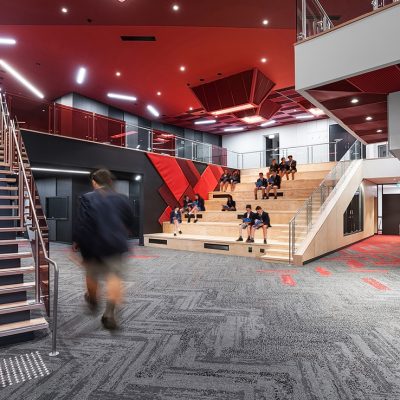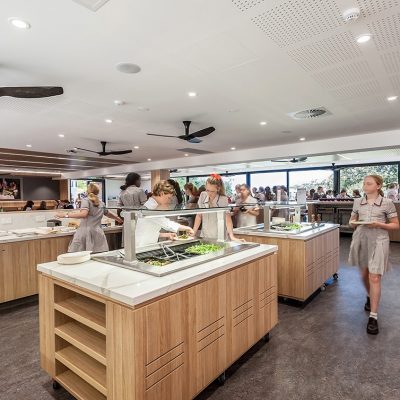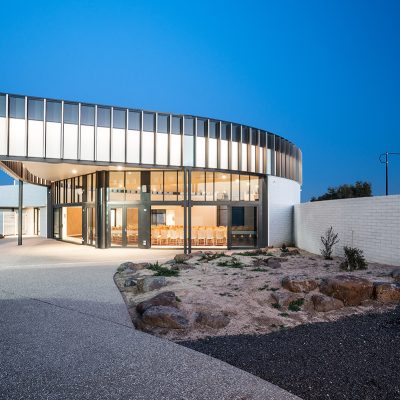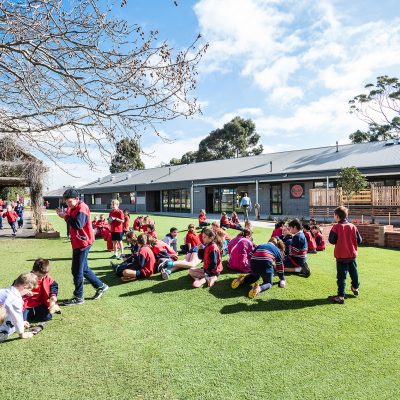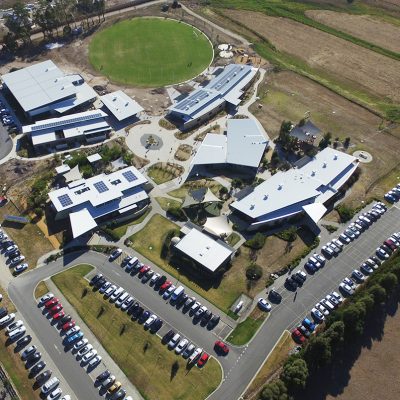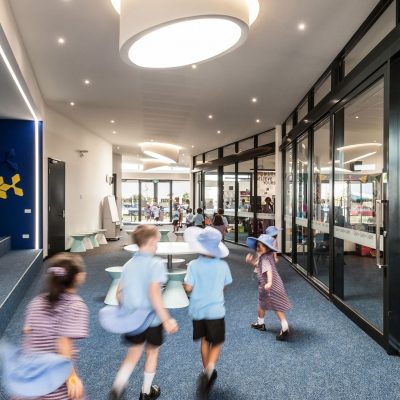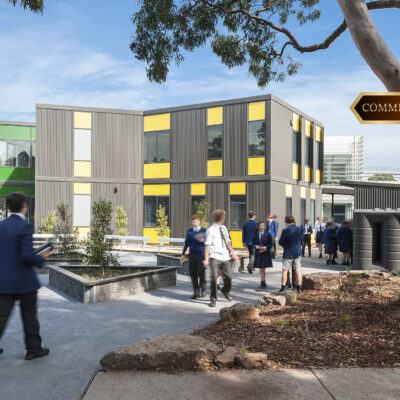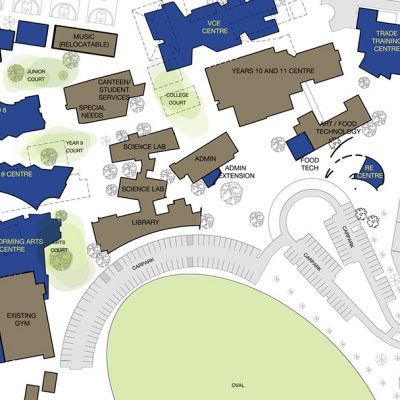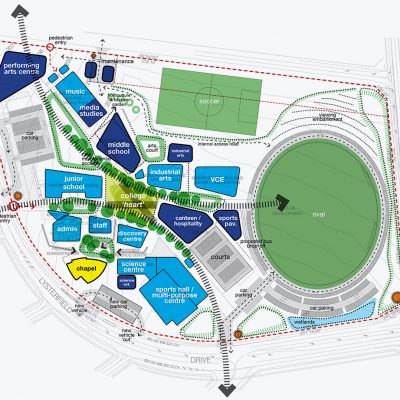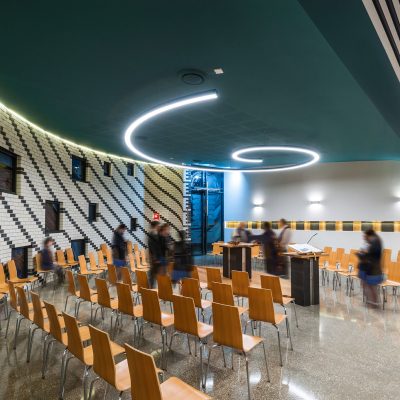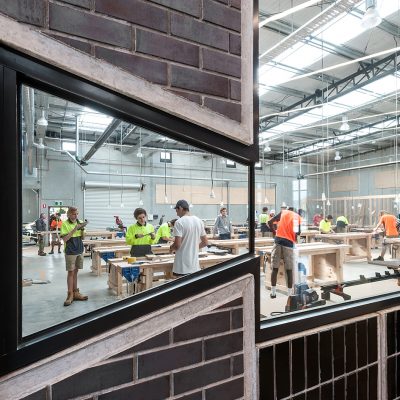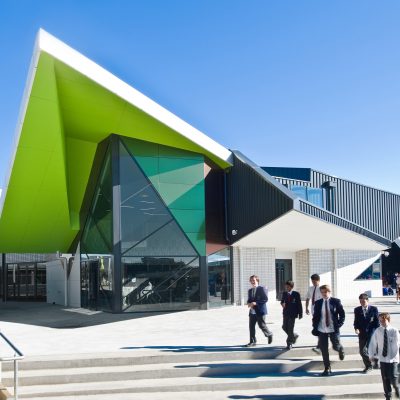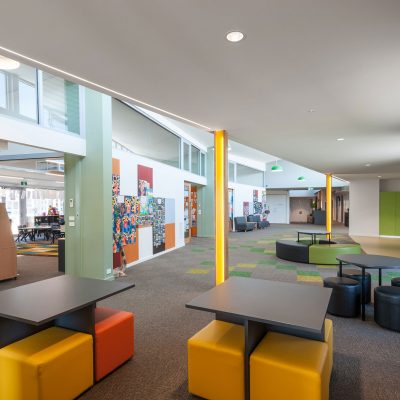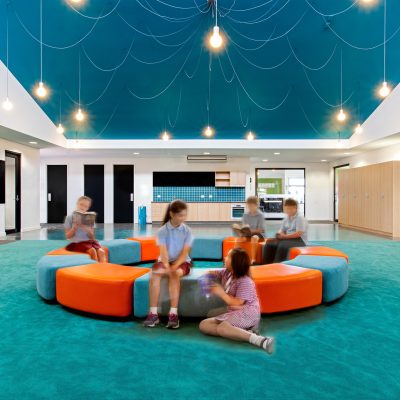The completion of a new Science and Specialist Learning Facility at St Bernard’s forms one of the initial stages of an overall redevelopment and revitalisation scheme for the College. Aimed at not only consolidating new and existing learning facilities, the proposal reinforces the College’s reputation as a centre for educational development, excellence and opportunity.
The design combines two uniquely different learning environments.
On its lower level the scheme accommodates a Specialist Learning Facility. This has been a key component of the College’s curriculum for much of the past two decades. The program continues to reinforce the learning diversity that is part of the College’s education philosophy, and aims specifically at accommodating those with unique learning circumstances. As a result the design team was challenged to create a learning environment which nurtured and encouraged these learning opportunities in a non-traditional context, and establish a strong sense of identity and pride for this section of the College’s Learning Community.
Housing designed-for-purpose learning spaces, the facilities have been developed to support the College’s specific pedagogical approach with an emphasis on personalised investigation and inquiry, within a supportive environment.
The upper level contains the College’s new Science Precinct. Housing new laboratories (each containing practical and theory facilities), preparation and storage facilities, staff offices, and additional general learning areas; the science precinct engages with the broader school community offering accessibility that encourages wider participation.
Two different learning facilities were combined with the upper level Science Precinct hovering over the lower level of Specialist Learning facilities that are made up of fluid forms that depart from traditional educational learning environments.
Although addressing different educational requirements the interior reads as a cohesive space. Both levels are connected via the centrally located courtyard space from which all learning facilities radiate. This provides strong visual and spatial connections between the various learning communities, and enables strong levels of engagement between the various environments.
The activation of circulation spaces as key learning environments has also enabled the future expansion and development plans to commence (as part of the College’s current master plan strategy). These future plans will re-affirm and celebrate some of the pre-existing fabric of the college when the new building sits as a contemporary companion alongside the original school building built in 1963.
